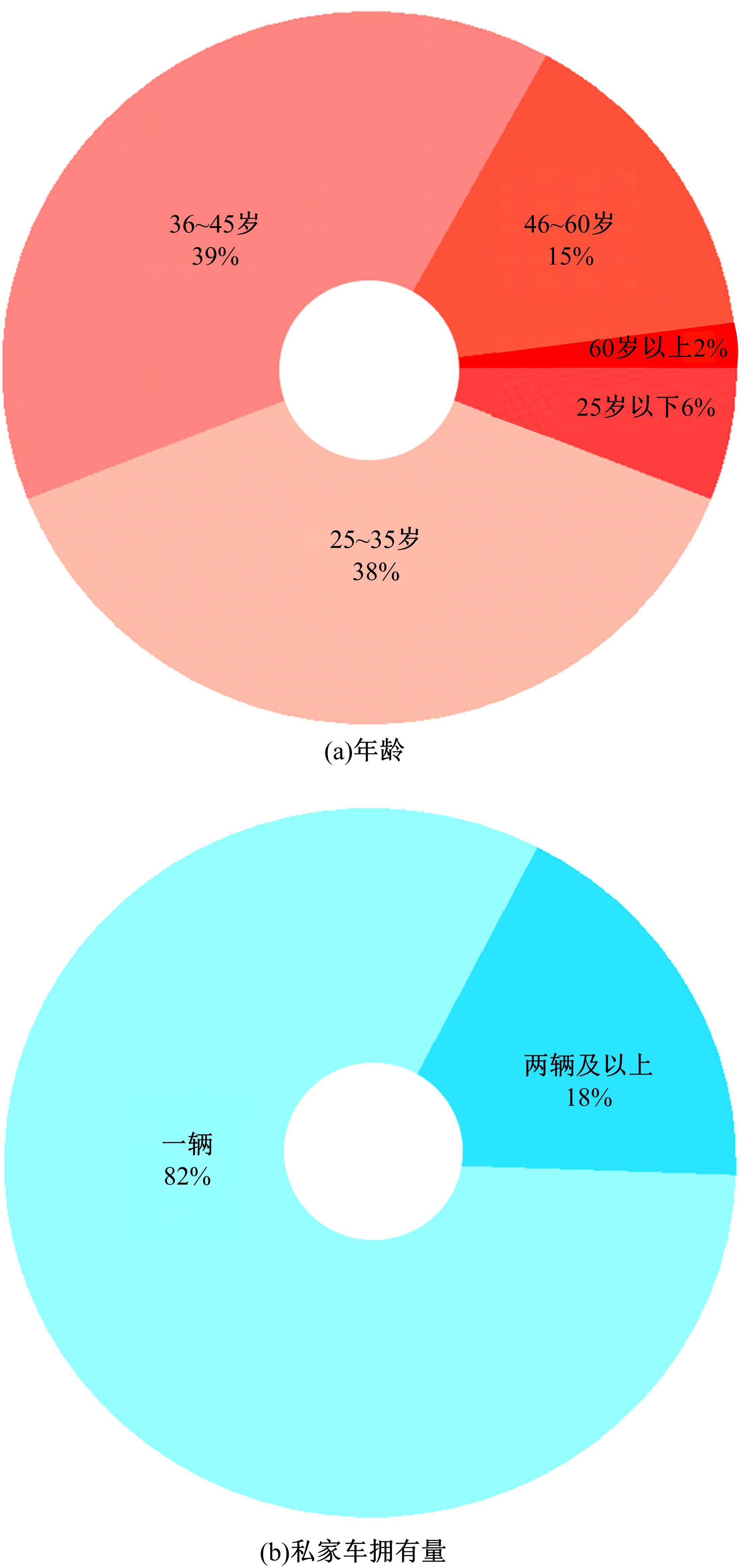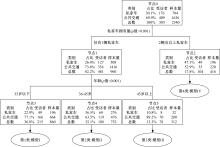Journal of Jilin University(Engineering and Technology Edition) ›› 2023, Vol. 53 ›› Issue (7): 1981-1993.doi: 10.13229/j.cnki.jdxbgxb.20211037
Travel mode choice of traditional car travelers after implementation of driving restriction policy
Zhuang-lin MA1( ),Shan-shan CUI2,Da-wei HU1,Jin WANG3
),Shan-shan CUI2,Da-wei HU1,Jin WANG3
- 1.College of Transportation Engineering,Chang'an University,Xi'an 710064,China
2.Shandong Provincial Communications Planning and Design Institute Group Co. ,Ltd. ,Jinan 250031,China
3.Yunnan Science Research Institute of Communication Co. ,Ltd. ,Kunming 650011,China
CLC Number:
- U491
| 1 | 国家统计局. 中国统计年鉴[M]. 北京: 中国统计出版社, 2020. |
| 2 | 刘凤喜, 曹弋, 周军. 城市机动车保有量控制及合理使用策略[M]. 北京: 北京交通大学出版社, 2018. |
| 3 | Jia N, Zhang Y, He Z, et al. Commuters' acceptance of and behavior reactions to license plate restriction policy: a case study of Tianjin, China[J]. Transportation Research Part D, 2016, 52: 428-440. |
| 4 | Zhang L L, Long R Y, Chen H. Do car restriction policies effectively promote the development of public transport?[J]. World Development, 2019, 119: 100-110. |
| 5 | Yang J, Lu F, Qin P. How does a driving restriction affect transportation patterns? the medium-run evidence from Beijing[J]. Environment for Development, 2018, 204: 270-281. |
| 6 | Yao W B, Ding Y H, Xu F M, et al. Analysis of cars' commuting behavior under license plate restriction policy: a case study in Hangzhou, China[C].∥The 21st International Conference on Intelligent Transportation Systems. USA: ITSC, 2018. |
| 7 | Huang H J, Fu D Y, Qi W. Effect of driving restrictions on air quality in Lanzhou, China: Analysis integrated with internet data source[J]. Journal of Cleaner Production, 2017, 142: 1013-1020. |
| 8 | Viard V, Fu S. The effect of Beijing's driving restrictions on pollution and economic activity[J]. Journal of Public Economics, 2015, 125: 98-115. |
| 9 | Guerra E, Millard-ball A. Getting around a license-plate ban: behavioral responses to Mexico City's driving restriction[J]. Transportation Research Part D, 2017, 55: 113-126. |
| 10 | Grange L D, Troncoso R. Impacts of vehicle restrictions on urban transport flows: the case of Santiago, Chile[J]. Transport Policy, 2011, 18 (6): 862-869. |
| 11 | Ye J J. Better safe than sorry? evidence from Lanzhou's driving restriction policy [J]. China Economic Review, 2017, 45: 1-21. |
| 12 | Cantillo V, Ortúzar J. Restricting the use of cars by license plate numbers: a misguided urban transport policy[J]. Dyna, 2014, 81(188): 75-82. |
| 13 | Wang L, Xu J, Qin P. Will a driving restriction policy reduce car trips? —the case study of Beijing, China[J]. Transportation Research Part A, 2014, 67: 279-290. |
| 14 | 侯现耀, 陈学武, 王卫杰. 多公交信息下居民出行前方式选择意向分析[J]. 交通运输系统工程与信息, 2014, 14(4): 79-84. |
| Hou Xian-yao, Chen Xue-wu, Wang Wei-jie. Preferences of pre-trip mode choice based on multiple public transit information[J]. Journal of Transportation Systems Engineering and Information Technology, 2014, 14(4): 79-84. | |
| 15 | Böckenholt U, Dillon W R. Some new methods for an old problem: modeling preference changes and competitive market structures in pretest market data[J]. Journal of Marketing Research, 1997, 34(1): 130-142. |
| 16 | Fischer G W, Nagin D. Random versus fixed coefficient quantal choice models[J]. Structural Analysis of Discrete Data with Econometric Applications, 1981: 273-304. |
| 17 | Train K E. Recreation demand models with taste differences over people[J]. Land Economics, 1998, 74(2):230-239. |
| 18 | Liu Y, Hong Z, Liu Y. Do driving restriction policies effectively motivate commuters to use public transportation?[J]. Energy Policy, 2016, 90: 253-261. |
| 19 | 戢晓峰, 刘丁硕, 陈方. 考虑需求强度与群体差异的公路旅客出行行为异质性研究[J]. 北京交通大学学报, 2021, 45(1): 47-61. |
| Ji Xiao-feng, Liu Ding-shuo, Chen Fang. Research on heterogeneity of road passenger travel behavior considering demand intensity and group differences[J]. Journal of Beijing Jiaotong University, 2021, 45(1): 47-61. | |
| 20 | William H G, David A H. A latent class model for discrete choice analysis: contrasts with mixed Logit[J]. Transportation Research Part B, 2003, 37: 681-698. |
| 21 | Zhao W J, Ma Z L, Yang K, et al. Impacts of variable message signs on en-route route choice behavior[J]. Transportation Research Part A, 2020, 139: 335-349. |
| 22 | 赵鹏, 翟茹雪, 宋文波. 考虑个体异质性的高速铁路旅客选择行为[J]. 北京交通大学学报, 2019, 43(2): 117-123. |
| Zhao Peng, Zhai Ru-xue, Song Wen-bo. Passenger choice behavior of high speed railway considering individual heterogeneity[J]. Journal of Beijing Jiaotong University, 2019, 43(2): 117-123. | |
| 23 | Kobayashi D, Takahashi O, Arioka H, et al. A prediction rule for the development of delirium among patients in medical wards: chi-square automatic interaction detector (CHAID) decision tree analysis model[J]. The American Journal of Geriatric Psychiatry, 2013, 21(10): 957-962. |
| 24 | 何凡, 沈毅, 叶众. 卡方自动交互检测法及其应用[J]. 中华预防医学杂志, 2005, 39(2): 133-135. |
| He Fan, Shen Yi, Ye Zhong. Chi-square automatic interactive detection method and its application[J]. Chinese Journal of Preventive Medicine, 2005, 39(2): 133-135. | |
| 25 | 云美萍, 刘广洋, 刘芳. 公交服务质量变化对出行方式选择行为的影响[J]. 中国公路学报, 2017, 30(7): 119-125. |
| Yun Mei-ping, Liu Guang-yang, Liu Fang. Influence of change of public transportation service quality on travel mode choice behavior[J]. China Journal of Highway and Transport, 2017, 30(7): 119-125. | |
| 26 | Rizzi L I, Ortúzar J D. Stated preference in the valuation of interurban road safety[J]. Accident Analysis & Prevention, 2003, 35(1): 9-22. |
| 27 | Ortúzar J D, Willumson L G. Modelling Transport[M]. London:Wiley, 2011. |
| 28 | 钟礼杰, 高玉堂, 金丕焕. Logistic回归模型的拟合优度检验[J]. 中国卫生统计, 1993, 10(3): 55-59. |
| Zhong Li-jie, Gao Yu-tang, Jin Pei-huan. The goodness of fit test of Logistic regression model[J]. Chinese Journal of Health Statistics, 1993, 10(3): 55-59. | |
| 29 | Akaike H T. A new look at the statistical model identification[J]. Automatic Control IEEE Transactions on, 1974, 19(6): 716-723. |
| 30 | Kass R E, Wasserman L. A reference Bayesian test for nested hypotheses and its relationship to the schwarz criterion[J]. Publications of the American Statistical Association, 1995, 90(431): 928-934. |
| [1] | Heng-yan PAN,Yong-gang WANG,De-lin LI,Jun-xian CHEN,Jie SONG,Yu-quan YANG. Evaluating and forecasting rear⁃end collision risk of long longitudinal gradient roadway via traffic conflict [J]. Journal of Jilin University(Engineering and Technology Edition), 2023, 53(5): 1355-1363. |
| [2] | Kai LU,Guang-hui XU,Zhi-hong YE,Yong-jie LIN. Algebraic method of bidirectional green wave coordination control for the head of the platoon considering the clearance time [J]. Journal of Jilin University(Engineering and Technology Edition), 2023, 53(2): 421-429. |
| [3] | Xin ZHANG,Wei-hua ZHANG. Safety analysis of main line under different traffic conditions in expressway confluence area [J]. Journal of Jilin University(Engineering and Technology Edition), 2022, 52(6): 1308-1314. |
| [4] | Chao-ying YIN,Chun-fu SHAO,Zhao-guo HUANG,Xiao-quan WANG,Sheng-you WANG. Investigating influences of multi⁃scale built environment on car ownership behavior based on gradient boosting decision trees [J]. Journal of Jilin University(Engineering and Technology Edition), 2022, 52(3): 572-577. |
| [5] | Da-yi QU,Zi-xu ZHAO,Yan-feng JIA,Tao WANG,Qiong-hui LIU. Car⁃following dynamics characteristics and model based on Lennard⁃Jones potential [J]. Journal of Jilin University(Engineering and Technology Edition), 2022, 52(11): 2549-2557. |
| [6] | Chun-jiao DONG,Dai-yue DONG,Cheng-xiang ZHU-GE,Li ZHEN. Trip characteristics and decision⁃making behaviors modeling of electric bicycles riding [J]. Journal of Jilin University(Engineering and Technology Edition), 2022, 52(11): 2618-2625. |
| [7] | Jing-xian WU,Hua-peng SHEN,Yin HAN,Min YANG. Residents' commuting time model under the nonlinear impact of urban built environment [J]. Journal of Jilin University(Engineering and Technology Edition), 2022, 52(11): 2568-2573. |
| [8] | Zhuang-lin MA,Shan-shan CUI,Da-wei HU. Urban residents' low⁃carbon travel intention after implementation of driving restriction policy [J]. Journal of Jilin University(Engineering and Technology Edition), 2022, 52(11): 2607-2617. |
| [9] | Da-yi QU,Kai-xian HEI,Hai-bing GUO,Yan-feng JIA,Tao WANG. Game behavior and model of lane-changing on the internet of vehicles environment [J]. Journal of Jilin University(Engineering and Technology Edition), 2022, 52(1): 101-109. |
| [10] | Wen-hui ZHANG,Jing YI,Wei LIU,Qiu-ying YU,Lian-zhen WANG. Injury mechanism of occupants in bus during rear-end crash based on MADYMO [J]. Journal of Jilin University(Engineering and Technology Edition), 2022, 52(1): 118-126. |
| [11] | Xiao-xue SUN,Hui ZHONG,Hai-peng CHEN. Statistical analysis system for students' examination results based on decision tree classification technology [J]. Journal of Jilin University(Engineering and Technology Edition), 2021, 51(5): 1866-1872. |
| [12] | Zhi-wei LIU,Jian-rong LIU,Wei DENG. Travelers′ choice behavior of autonomous vehicles based on latent class [J]. Journal of Jilin University(Engineering and Technology Edition), 2021, 51(4): 1261-1268. |
| [13] | Jin XU,Cun-shu PAN,Jing-hou FU,Jun LIU,Dan-qi WANG. Speed behavior characteristic on typical driving scenarios and along switched scenarios [J]. Journal of Jilin University(Engineering and Technology Edition), 2021, 51(4): 1331-1341. |
| [14] | Wei-xiong ZHA,Qi-yan CAI,Jian LI,Li-xin YAN. Optimization of offset of urban arterial signal coordination under condition of vehicle entry and exit on side road [J]. Journal of Jilin University(Engineering and Technology Edition), 2021, 51(2): 565-574. |
| [15] | LUAN Xin, DENG Wei, CHENG Lin, CHEN Xin-yuan. Mixed Logit model for understanding travel mode choice behavior of megalopolitan residents [J]. 吉林大学学报(工学版), 2018, 48(4): 1029-1036. |
|
||



